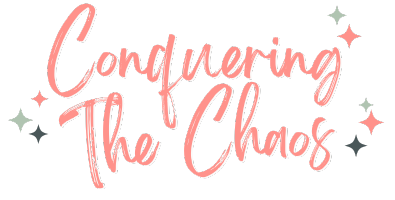
Let’s be honest—how often have you found yourself caught up in the excitement of a shiny new course or tool that promises to revolutionize your business? I can honestly say that for me it is wayyyyyy too many to count. I’ve spent so much money on things that just don’t serve me or my business and these courses and tools often end up unused, adding to the digital clutter that’s already overwhelming my workspace.
Daily, we are bombarded with new products, services, and strategies, each claiming to be the “must-have” solution. It’s impossibly easy to get distracted and lose sight of the true guideposts in our business —our goals, mission, and the core values.
Here’s the reality: more doesn’t always mean better. Often, it leads to more stress, more decisions, and more time spent managing things that don’t actually move the needle. That’s why embracing minimalism in my business has been so impactful. It’s not about doing less; it’s about focusing on what truly matters and cutting out the noise.
Understanding Business Minimalism
When you think of minimalism, you probably think of utilizing it in your home and lifestyle, but what if we use the same principles but to manage our business lifestyle?
So, what exactly is minimalism in business? It’s about getting back to basics, focusing on what truly adds value, and letting go of everything else. Imagine running your business with a clear head, knowing that every tool, process, and task you’ve kept serves a purpose. Doesn’t that sound freeing?
But it’s not just about feeling good. A minimalist approach helps you manage your resources better. You’re not spending money on things you don’t need or wasting time on processes that don’t work. Every decision becomes more intentional, and that’s where you start to see real progress in your business.
When you simplify your business, you reduce the stress and overwhelm that comes from trying to juggle too many things at once. Instead of constantly playing catch-up with the latest trends or tools, you can focus on what really matters to you and your business.
Identifying Clutter in Your Business
Let’s take a moment to think about all the “stuff” in your business. I’m not just talking about the physical things—although those can definitely pile up—I’m also talking about digital and mental clutter. It’s amazing how these different types of clutter can sneak in and take over without us even realizing it. I’ve been there too, drowning in a sea of emails, unused apps, and half-finished ideas. It can feel overwhelming, but the good news is, you can take control of it.
Physical Clutter
Take a look around your workspace. Are there piles of papers you’ve been meaning to organize, gadgets you don’t use, or supplies you bought in bulk because they were on sale? All these things add up, creating a space that’s more stressful than productive. A cluttered workspace can lead to a cluttered mind, making it harder to focus on what really matters.
Digital Clutter
How about the digital side? How many apps or software subscriptions are you currently paying for but barely using? How many times have you clicked “remind me later” on an update or signed up for a free trial that you never actually canceled? And then there’s the inbox—oh, the inbox! If your email is anything like mine used to be, it’s probably full of newsletters you never read and offers you don’t need.
All of these digital distractions waste not only your money but also your time and mental energy. It’s like having a thousand tabs open in your brain—no wonder you feel overwhelmed!
Mental Clutter
Finally, let’s talk about mental clutter. This one’s a bit trickier because it’s not as obvious, but it’s just as important. Do you have a million ideas swirling around in your head, half-started projects you can’t seem to finish, or a constant nagging feeling that you should be doing more? This is mental clutter, and it’s a major culprit when it comes to feeling overwhelmed.
Decision fatigue is real, especially when you’re trying to juggle too many things at once. The pressure to keep up with every new trend or opportunity can be exhausting and ultimately counterproductive. It’s like carrying around a backpack full of bricks—you’re trying to move forward, but the weight keeps holding you back.
Steps to Declutter Your Business
Now that we’ve identified the clutter in your business, it’s time to roll up our sleeves and start clearing it out. Don’t worry—it doesn’t have to be overwhelming. Small, intentional steps can make the process manageable and even satisfying.
Step 1: Set Clear Goals and Priorities
Before you can declutter, you need to know what really matters in your business. What are your core goals and priorities? Take some time to define your business’s mission and the objectives that align with it. When you’re clear on what’s important, it’s easier to see what’s just noise. Everything in your business should serve these goals, so if something doesn’t, it might be time to let it go.
Step 2: Audit Your Tools and Processes
Now, let’s take a closer look at all those tools, apps, and processes you’re using. It’s time for an audit! Go through each one and ask yourself: Is this tool really helping me achieve my goals, or is it just adding to the clutter? Be ruthless here—if something isn’t pulling its weight, it’s time to part ways. The same goes for your processes. Are there steps in your workflow that don’t add value or feel more like busy work? Simplifying these can save you time and reduce stress.
Step 3: Streamline Your Workflows
Speaking of workflows, this is a great opportunity to streamline them. Look for ways to simplify how you get things done. Can you automate repetitive tasks? Maybe there’s software that can handle routine tasks, freeing up your time for more important work. Creating efficient systems not only makes your business run smoother but also gives you more headspace to focus on your goals.
Step 4: Clear Out Your Computer
It’s time to go through your email and unsubscribe from lists that aren’t providing real value. Next, organize your digital files—delete what you don’t need and create a system for what you do. Regularly purging and organizing your digital space can do wonders for your productivity and peace of mind. And finally, before you spend money on a new product or course, make sure that you don’t already have something that can do the same thing
Step 5: Cultivate a Minimalist Mindset
This last step is about mindset. Minimalism isn’t just a one-time project; it’s an ongoing approach to how you run your business. Start focusing on quality over quantity in your decisions. Whether it’s the products you offer, the clients you take on, or the tools you use, always ask yourself: Does this really add value? Embrace the idea that “less is more” and resist the urge to jump on every new trend that comes along.
Maintaining Minimalism in the Long Run
Think of minimalism as an ongoing practice, not a one-time event. Schedule regular reviews—maybe once a quarter or even once a month—to take stock of your tools, processes, and goals. Ask yourself: Is everything still aligned with my mission? Are there new areas of clutter creeping in? These reviews don’t have to be time-consuming, but they’re essential for staying on track.
Also make sure you stay mindful in your decision-making. Every time you’re faced with a choice—whether it’s buying a new tool, taking on a new project, or changing up your workflow—pause and ask yourself, “Does this align with my goals? Is this truly necessary?” By cultivating this habit, you’ll find it easier to resist distractions and focus on what really matters. It’s all about making intentional choices that keep your business running smoothly and efficiently.
Maintaining minimalism is about building habits that support a clear, clutter-free approach to your business. It might take a bit of practice, but over time, it becomes second nature. And the rewards are worth it—more focus, less stress, and a business that feels aligned with your values and goals.
So, keep it simple, stay focused, and remember why you started this journey in the first place. Minimalism isn’t just a trend; it’s a powerful tool that can help you create the business—and the life—you truly want.
